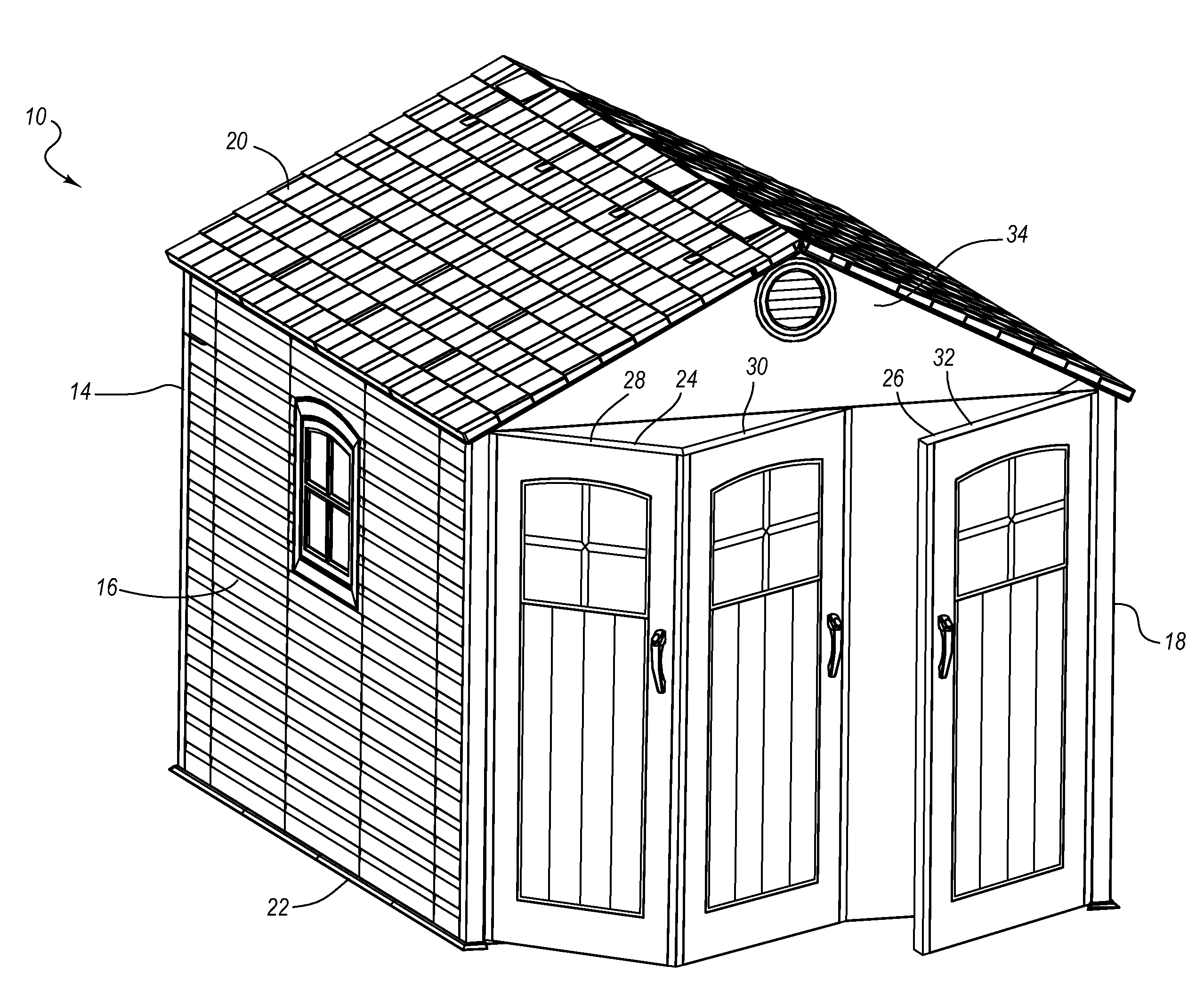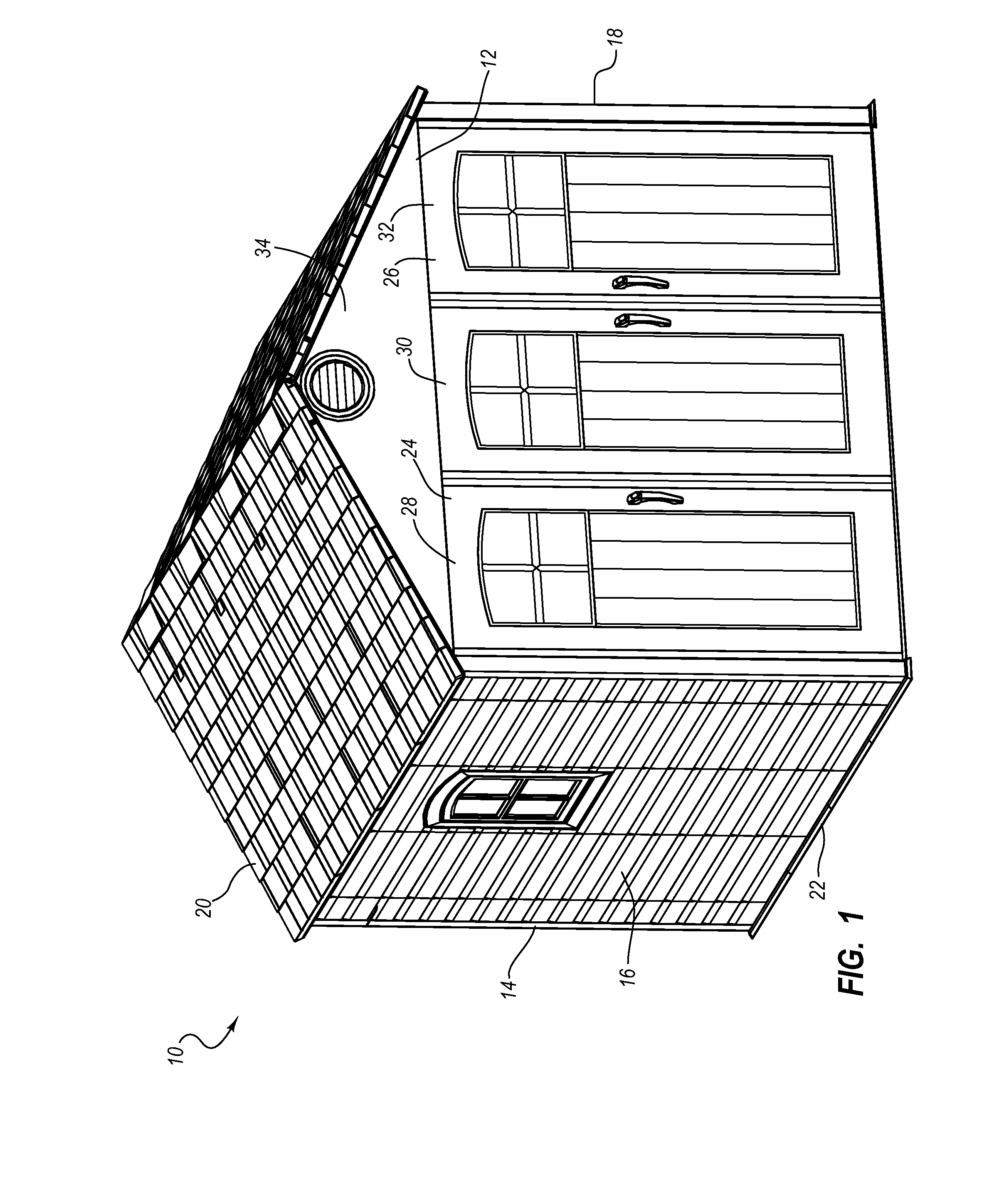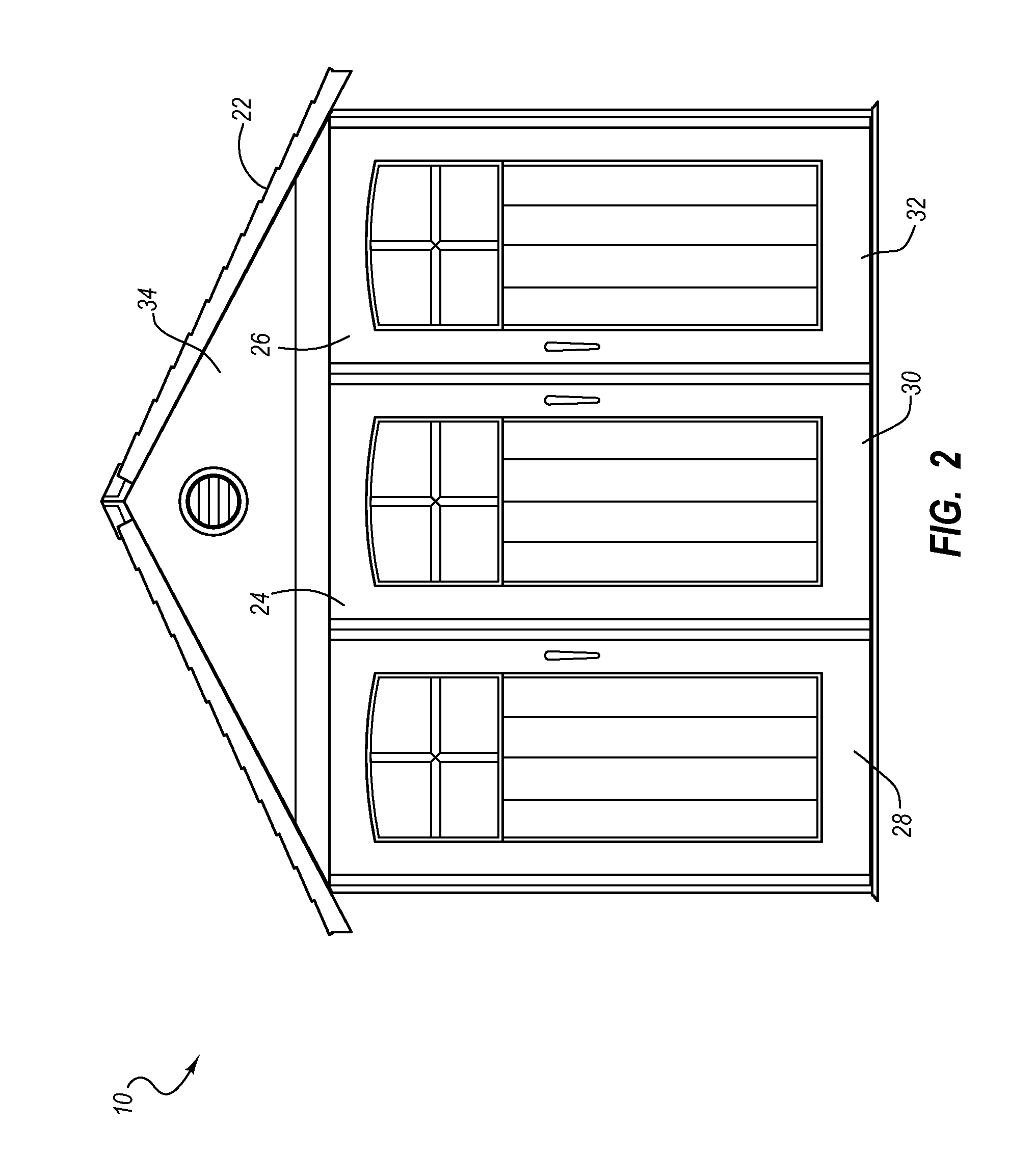Door for an enclosure
a door and enclosure technology, applied in the field of enclosures, can solve the problems of increasing the cost of the shed and the amount of time required to assemble the shed, requiring a large amount of time to construct and assemble, and reducing the number of disadvantages and problems, so as to reduce the disadvantages or the effect of reducing the disadvantages
- Summary
- Abstract
- Description
- Claims
- Application Information
AI Technical Summary
Benefits of technology
Problems solved by technology
Method used
Image
Examples
Embodiment Construction
[0010]A need therefore exists for an enclosure that eliminates or diminishes the disadvantages and problems described above.
[0011]One aspect is an enclosure, such as a shed, that may include an entrance or opening that is large enough to allow cars, trailers and the like to enter. For example, the shed may include an opening that is 110 inches wide. The opening could also be larger or smaller depending, for example, upon the size, shape and / or number of items intended to be placed inside the shed.
[0012]Another aspect is a shed that may include an entrance that may be opened or closed. For example, the shed may include doors that may be selectively opened or closed and the doors may be secured in the opened and / or closed positions. The doors may open vertically, horizontally or a combination of vertically and horizontally. In addition, the doors may pivot, slide, roll-up, be removable or the like. Further, the doors may open inwardly and / or outwardly, as desired. Significantly, the d...
PUM
| Property | Measurement | Unit |
|---|---|---|
| width | aaaaa | aaaaa |
| width | aaaaa | aaaaa |
| width | aaaaa | aaaaa |
Abstract
Description
Claims
Application Information
 Login to View More
Login to View More - R&D
- Intellectual Property
- Life Sciences
- Materials
- Tech Scout
- Unparalleled Data Quality
- Higher Quality Content
- 60% Fewer Hallucinations
Browse by: Latest US Patents, China's latest patents, Technical Efficacy Thesaurus, Application Domain, Technology Topic, Popular Technical Reports.
© 2025 PatSnap. All rights reserved.Legal|Privacy policy|Modern Slavery Act Transparency Statement|Sitemap|About US| Contact US: help@patsnap.com



